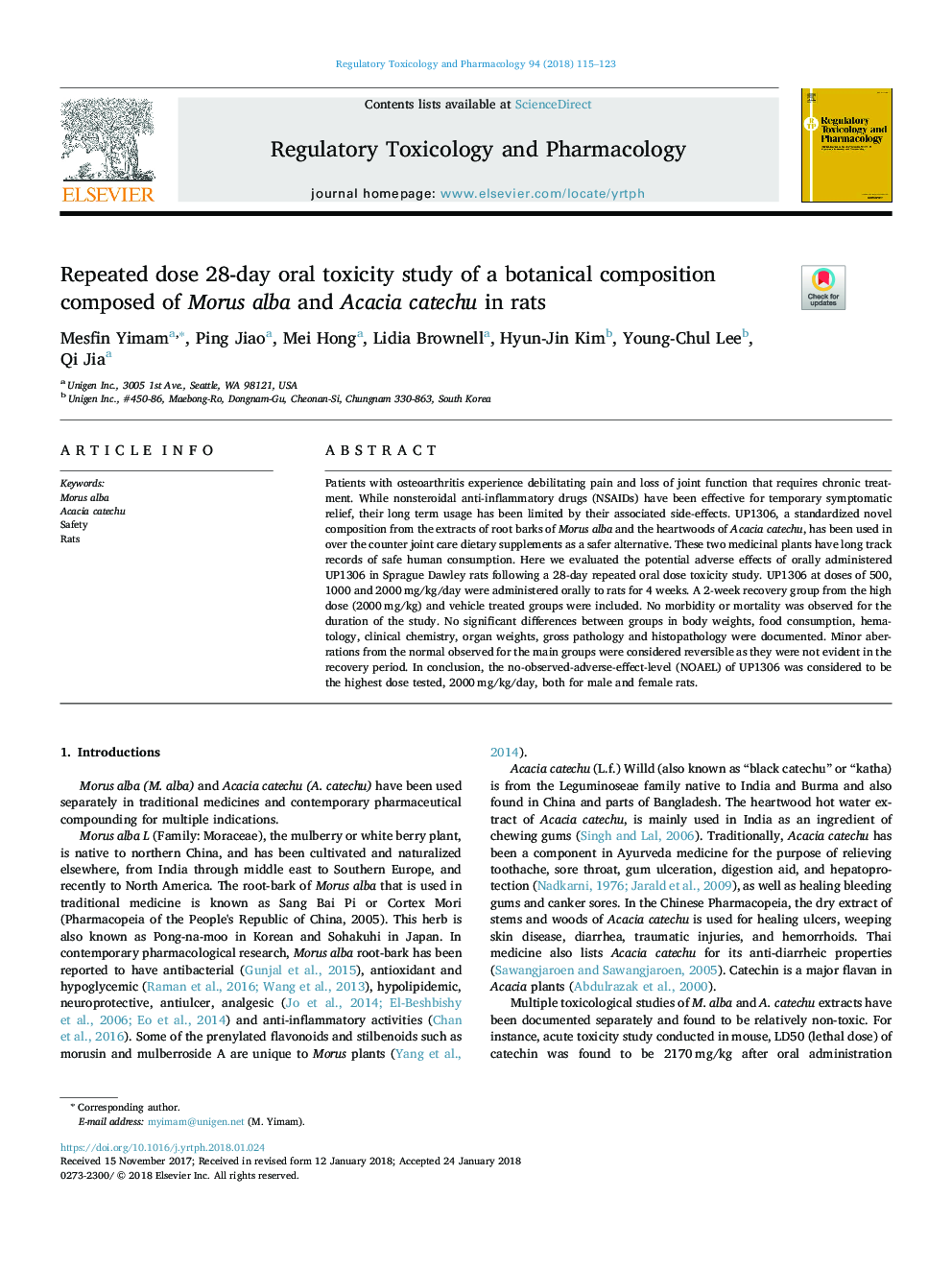| Article ID | Journal | Published Year | Pages | File Type |
|---|---|---|---|---|
| 8551444 | Regulatory Toxicology and Pharmacology | 2018 | 9 Pages |
Abstract
Patients with osteoarthritis experience debilitating pain and loss of joint function that requires chronic treatment. While nonsteroidal anti-inflammatory drugs (NSAIDs) have been effective for temporary symptomatic relief, their long term usage has been limited by their associated side-effects. UP1306, a standardized novel composition from the extracts of root barks of Morus alba and the heartwoods of Acacia catechu, has been used in over the counter joint care dietary supplements as a safer alternative. These two medicinal plants have long track records of safe human consumption. Here we evaluated the potential adverse effects of orally administered UP1306 in Sprague Dawley rats following a 28-day repeated oral dose toxicity study. UP1306 at doses of 500, 1000 and 2000â¯mg/kg/day were administered orally to rats for 4 weeks. A 2-week recovery group from the high dose (2000â¯mg/kg) and vehicle treated groups were included. No morbidity or mortality was observed for the duration of the study. No significant differences between groups in body weights, food consumption, hematology, clinical chemistry, organ weights, gross pathology and histopathology were documented. Minor aberrations from the normal observed for the main groups were considered reversible as they were not evident in the recovery period. In conclusion, the no-observed-adverse-effect-level (NOAEL) of UP1306 was considered to be the highest dose tested, 2000â¯mg/kg/day, both for male and female rats.
Keywords
Related Topics
Life Sciences
Environmental Science
Health, Toxicology and Mutagenesis
Authors
Mesfin Yimam, Ping Jiao, Mei Hong, Lidia Brownell, Hyun-Jin Kim Hyun-Jin Kim, Young-Chul Lee, Qi Jia,
